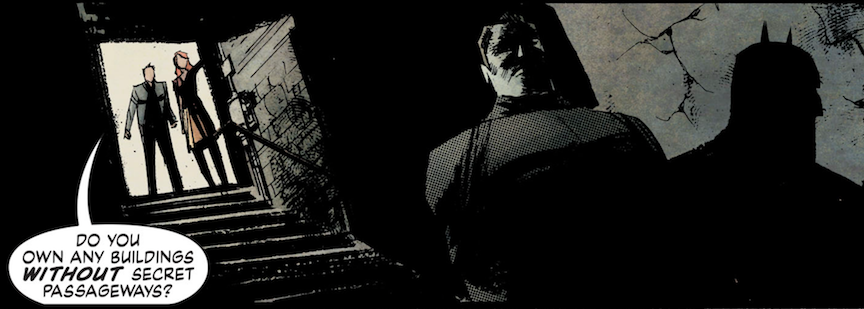As we head into 2021, let’s spread a little bit of good cheer, as I continue to answer a question posed to me by friend of the Geekery Kenny last week. Do you have a question that anyone can answer but you, for reasons passing understanding, want to hear what I have to say? Send an email to thecasualgeekery@gmail.com! Or hit us up on Twitter, @Casual_Geekery!
Continuing our latest adventure into looking at some fun comic book stuff instead of the dregs (like my other ongoing look at JUSTICE LEAGUE: CRY FOR JUSTICE – new chapter coming soon!), it’s time to dive back in to a look at my favorite DC Comics miniseries. There were some classics in PART ONE (you should click that link and check it out) and we have some more great stories here.
Superman & Batman: Generations (1999)
Written and Illustrated by John Byrne
I’m not usually a fan of later-era John Byrne, but this miniseries is an exception. The main conceit of this four issue story is that Superman and Batman debuted in 1938 and 1939 and aged in real time. Each issue featured 2 chapters that told adventures 10 years apart as the World’s Finest team – and their families – continued to fight crime into 1999 (and beyond) thanks to some comic book science and logic.
The initial miniseries spawned two sequels, continuing the adventures of the Man of Steel and the Caped Crusader. The second Generations began to introduce members of both the Justice Society and the Justice League. The third miniseries, a 12-issue special, took 100-year jumps between stories. While fun, there was some diminishing returns with the sequel series. The first one, though, is a lot of fun.
Formerly Known as the Justice League (2004)
Written by Keith Giffen and JM DeMatteis
Pencils by Kevin Maguire
Inks by Joe Rubenstein
Colors by Lee Loughridge
Justice League International, the post-Crisis on Infinite Earths series, is one of the most revered comic book properties of the 1980s. Giffen and DeMatteis wrote a Justice League team that was both funny and heart-warming. When the team decided to get the band back together for a 6-issue miniseries in 2004, it was immediately a highly-anticipated debut. And it delivered, too, winning the 2004 Eisner Award for best comedy series.
FKATJL brings the SUPERBUDDIES (Booster Gold, Blue Beetle, Fire, Ralph and Sue Dibney, Captain Atom and MAX LORD with his robot sidekick L-Ron) to a a strip mall in Queens, where they advertise for their services. To add a little more fish-out-of-water humor, Mary Marvel gets added to the team, taking the place of the then-Captain Marvel. The team takes on a superpowered biker gang, gets kidnapped and forced to compete in Roulette’s superhero fight club and nearly causes an intergalactic war with Manga Khan.
The 6-issue miniseries would spawn a sequel – I Can’t Believe It’s Not the Justice League – which may have been better, but was printed in the anthology series JLA Classified and thus is not eligible for this list.
Infinite Crisis (2005-06)
Written by Geoff Johns
Pencils by Phil Jimenez, Jerry Ordway, George Perez and Ivan Reis
Inks by Andy Lanning
Colors by Jeremy Cox and Guy Major
The first major company-wide crossover of the 21st Century essentially changed the course of DC Comics. The seven-issue miniseries engulfed all of the publishing universe, much like the original Crisis on Infinite Earths. The main story in the miniseries focuses on the return of the Earth-2 Superman, Superboy Prime and the Alexander Luthor of Earth-3 to the main Earth, disappointed in the heroes that were left behind post-Crisis.
Their return sets off a world-wide battle as Alexander Luthor slowly slowly enacts his plan to destroy this Earth and replace it with a “more perfect Earth.” Infinite Crisis was built up for months before the series actually debuted, and the story more than lived up to the hype.
Bizarro (2015)
Written by Heath Corson
Pencils and Inks by Gustavo Duarte
Colors by Pete Pantazis
Sometimes you just need a little bit of fun, and this six-issue miniseries is all about fun. Bizarro, in the right hands, can be a tragic figure. But the character’s backwards mannerisms and inability to do anything right is rife with comedy as well.
As Bizarro is frequently a thorn in Superman’s side, the Man of Steel conceives a plan to get his backwards duplicate out of Metropolis and out of his hair. So he sets Bizarro on a roadtrip across the country with Jimmy Olsen. Hilarity ensues.
Batman: White Knight (2017-18)
Written and Illustrated by Sean P. Murphy
The start of a new pocket universe, Murphy’s White Knight series pit the Dark Knight against his greatest foe, but this time the roles are reversed. The Joker, using his real identity of Jack Napier, endears himself to the people of Gotham City by trying to help and make up for all the damage he did when he battled Batman. In doing so, he turned Gotham against Batman.
Over the course of eight issues, Murphy turns the world of Gotham on its head. the miniseries also introduced my favorite version of Harleen Quinzel, the former criminal psychiatrist turned supervillain Harley Quinn. She helps Napier keep the Joker persona beneath the surface. Murphy has continued to build on the world of White Knight, but the original series has been the best so far.
We’re halfway done with the picks for my favorite miniseries. Stay tuned for part 3, with more Superman, more Batman and more looks at different eras.
